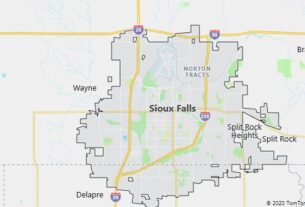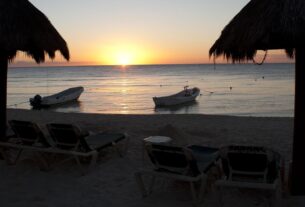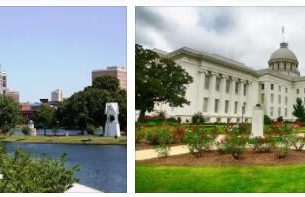Alberta
Alberta [.mu.l bə ː tə], the western prairie provinces of Canada, 640,330 km 2, (2017) 4,290,000 residents (1971: 1.6 million residents); The capital is Edmonton, the largest city is Calgary.
The south-eastern part, 600–1,000 m above sea level, once open prairie, merges into extensive forests to the north. In the west, Alberta extends over the foothills with pastureland to the Rocky Mountains, in Mount Columbia rising to 3,700 m above sea level. Alberta has a continental climate with warm summers and cold winters.
In the southern and central area, heavily mechanized agriculture is practiced, in the dry south partly with irrigation. Grain cultivation (barley, wheat) and the cultivation of alfalfa dominate, as well as cattle breeding (cattle, pigs). The National Parks and Winter Sports Areas in the Rocky Mountains are the main attractions in Alberta’s tourism industry. According to ehealthfacts, over 80% of all Canada’s oil and gas reserves are in Alberta. The extensive oil sands deposits on the Athabasca River have been used at Fort McMurray since 1967. Most of them are exported to the USA via pipeline. The high environmental impact of their extraction and the low world market price for crude oil led to a significant decline in production from the end of 2014. The industries dominate food processing, aerospace, petrochemicals, Wood and metal processing before; Main locations are Edmonton and Calgary.
The prominent position in the promotion of fuels had brought the province great prosperity with low unemployment (below 5%) and an above-average increase in jobs, especially in the tertiary sector. However, the drop in oil prices brought significant economic losses from 2015; the unemployment rate rose to 7.9% by 2016. Nevertheless, Alberta has remained a target for intra-Canadian population movements as well as immigrants (annual population increase 2011 to 2016 of 2.32%). This makes Alberta the fastest growing province in Canada; Calgary and Edmonton have particularly benefited from this.
History: The southern half of what is now Alberta was part of the territory that King Charles II of England gave to the Hudson’s Bay Company in 1670. The first European travelers were primarily interested in the fur trade. After 1783 the North West Company established trading posts; In 1821 this went up in the Hudson’s Bay Company, which ceded the land to the new Canadian state (Dominion of Canada) in 1869. After that, increased colonization began; the immigrants came mainly from the British Isles (45%), Germany (14%) and the Ukraine (9%). In the Great Depression (peak around 1930) Alberta, whose economy until this time was based mainly on the agricultural sector, suffered heavy economic losses.
Vancouver (Canada)
Vancouver [Vän ku ː və], port city in southwestern province of British Columbia, Canada, across from Vancouver Iceland, with natural harbor on Burrard Inlet of the Georgia Strait, surrounded by snow-capped mountains of the Coast Mountains; the metropolitan area is with (2019) 2.7 million residents the third largest in Canada (core city 685 900 residents).
An important destination for international immigrants, especially from Southeast Asia (almost 200,000 Chinese alone); more than half of the population is of foreign origin. Overall strong population increase (10.6% between 2001 and 2011); catholic archbishop’s seat; University of British Columbia (founded in 1908), also Simon Fraser University (founded in 1963) in the Burnaby district, art galleries, anthropological (Indians), nautical and a.o. important museums, theaters, symphony orchestras. To the west of the city center, at the end of the peninsula, is Stanley Park with numerous leisure facilities and attractions (including zoo, aquarium).
The economy is determined by the raw material deposits of Western Canada and their use: wood processing, food production (especially fish processing), metal industry and mechanical engineering. Since the end of the 1980s, the geographical location in the Asia-Pacific economic area has determined the structure: significant development in the film, textile, toy and electronics industries and, in recent years, software production and biotechnology. Important commercial and financial center, increasing tourism; important docking point for cruise ships (Canada Place), one of the most important ports on the Pacific coast of North America (Handling of bulk goods such as wood, wheat, potash salt, coal). Container ports have been established since the 1970s; End point of the transcontinental railways; international Airport. Comprehensive urban redevelopment projects were among others. carried out following the 1986 World Exhibition. Vancouver hosted the XXI. 2010 Winter Olympics.
Today, the image of the city is mainly shaped by the buildings by the architect Arthur C. Erickson († 2009), born in Vancouver in 1924: the MacMillan office tower (1968/69), on the Bay of Vancouver the anthropological museum of the University of British Columbia (1971– 76), design of Robson Square (1973–79) with the justice building (1973–80). A new landmark was created in 1986 with the “Canada Palace” convention center. In the Burnaby district, the buildings of Simon Fraser University, founded in 1963, also by Erickson. The tallest building in Vancouver is the 201 m high “Living Shangri-La” (2005-08).
The first settlement in what is now Vancouver was a sawmill built in 1865; later the settlements of Granville and Hastings emerged; The former was named Vancouver City in 1886 with a population of 1,000.




